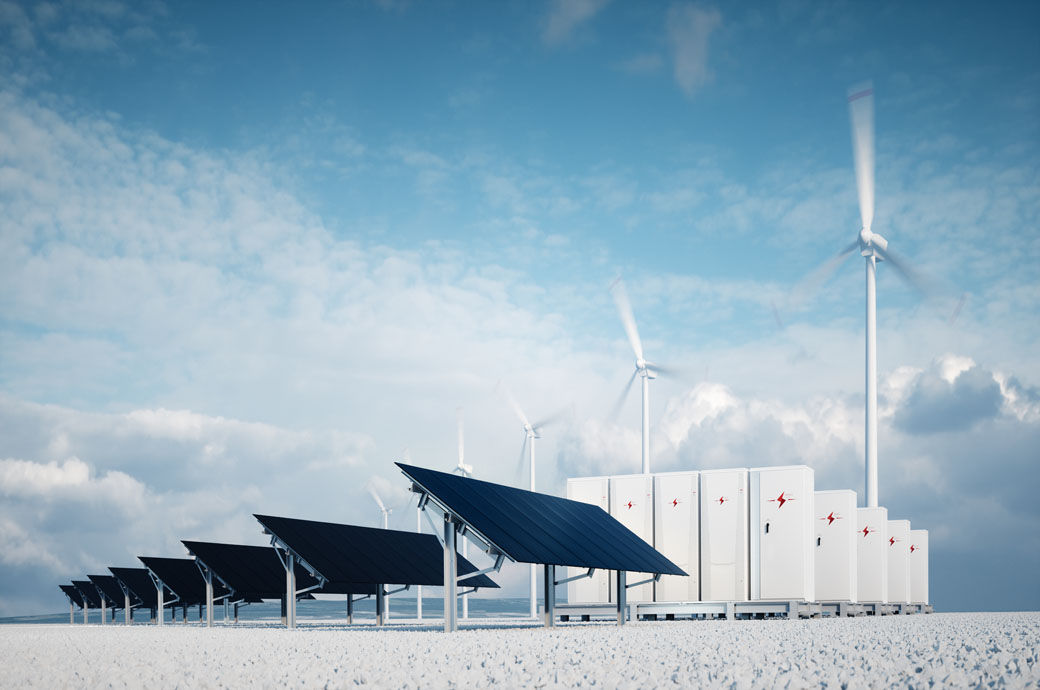
Global primary energy consumption grew by around 1 per cent last year, taking it to nearly 3 per cent above the 2019 pre-COVID level. Within this, gas fell by 3 per cent and renewables (excluding hydro) increased by 13 per cent. The dominance of fossil fuels was largely unchanged at almost 82 per cent of total consumption.
Global energy-related emissions continued to grow, up 0.8 per cent, despite strong growth in renewables.
The strong pace of deployment of renewables in the power sector continued, driven by solar and wind. Last year saw the largest ever increase in wind and solar new build capacity. Together they reached a record 12 per cent share of power generation, with solar up by 25 per cent and wind up by 13.5 per cent. Renewables (excluding hydro) met 84 per cent of net electricity demand growth in 2022.
The Ukraine conflict and curtailment of Russian supplies to Europe precipitated record international gas prices in Europe (a three-fold increase) and Asia (two-fold), and unprecedented shifts in global oil and gas trade flows.
“Despite further strong growth in wind and solar in the power sector, overall global energy-related greenhouse gas emissions increased again. We are still heading in the opposite direction to that required by the Paris Agreement,” EI President Juliet Davenport said in a release.
Primary energy consumption increased in all regions apart from Europe (minus 3.8 per cent) and the CIS area (minus 5.8 per cent).
Renewables’ (excluding hydro) share of primary energy consumption reached 7.5 per cent, an increase of nearly 1 per cent over the previous year. Fossil fuel consumption as a percentage of primary energy remained steady at 82 per cent.
Carbon dioxide emissions from energy use, industrial processes, flaring and methane (in carbon dioxide equivalent terms) continued to rise to a new high growing 0.8 per cent in 2022 to 39.3 GtCO2e, with emissions from energy use rising 0.9 per cent to 34.4 GtCO2.
In contrast, carbon dioxide emissions from flaring decreased by 3.8 per cent and emissions from methane and industrial processes decreased by 0.2 per cent.
Global oil production increased by 3.8 million b/d in 2022. Saudi Arabia (1,182,000 b/d) and the United States (1,091,000 b/d), saw the largest increases. Nigeria reported the largest decline in production (184,000 b/d) with production in Libya declining by 181,000 b/d.
Natural gas prices reached record levels in Europe and Asia in 2022, rising nearly three-fold in Europe and doubling in the Asian LNG spot market.
Global natural gas demand declined by 3 per cent in 2022, dropping just below the 4 Tcm mark achieved for the first time in 2021. Its share in primary energy in 2022 decreased slightly to 24 per cent (from 25 per cent in 2021).
Global gas production remained relatively constant compared to 2021.
Japan replaced China as the world’s largest LNG importer and accounted for close to 60 per cent of global LNG demand growth in 2022. The Asia Pacific region accounted for around 65 per cent of global LNG demand but fell 6.5 per cent compared to 2021 whilst Europe increased its LNG imports by 57 per cent.
Coal consumption continued to increase in 2022, rising 0.6 per cent on 2021 to 161 EJ; the highest level of coal consumption since 2014.
The growth in demand was largely driven by China (1 per cent) and India (4 per cent).
Coal consumption in both North America and Europe declined by 6.8 per cent and 3.1 per cent respectively. In 2022, OECD coal consumption was around 10 per cent less than its 2019 pre-COVID level and non-OECD coal consumption over 6 per cent higher.
Global coal production increased by over 7 per cent last year compared to 2021, reaching a record high of 175 EJ. China, India, and Indonesia accounted for over 95 per cent of the increase in global production.
Renewable power (excluding hydro) rose by 14 per cent in 2022 to reach 40.9 EJ—slightly below the previous year’s growth rate of 16 per cent.
Solar and wind capacity continued to grow rapidly in 2022 recording a record increase of 266 GW. Solar accounted for 72 per cent (192 GW) of the capacity additions.
The largest portion of solar and wind growth was in China, which accounted for about 37 per cent and 41 per cent of global capacity additions respectively.
Hydroelectricity generation increased by 1.1 per cent in 2022.
ALCHEMPro News Desk (DS)
Receive daily prices and market insights straight to your inbox. Subscribe to AlchemPro Weekly!